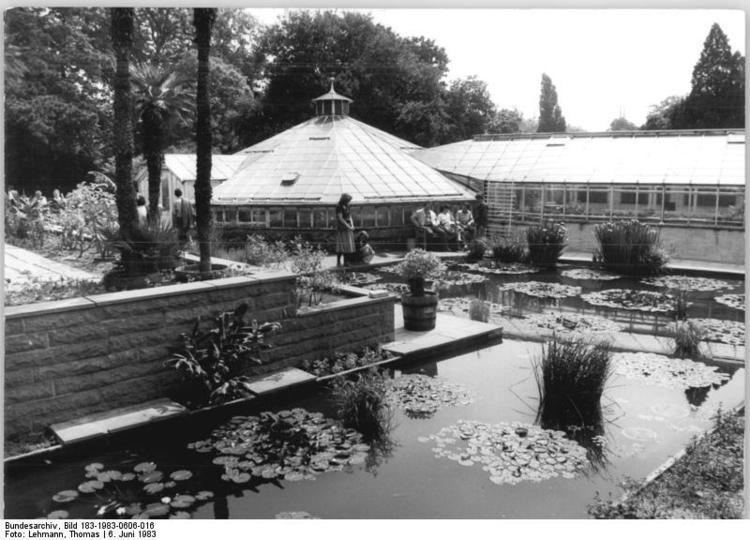Phone +49 345 5526271 | ||
 | ||
Address Am Kirchtor 1-12, 06108 Halle (Saale), Germany Hours Closed now Thursday2–6PMFriday2–6PMSaturday10AM–6PMSunday10AM–6PMMonday2–6PMTuesday2–6PMWednesday2–6PM Similar Amtsgarten, Reichardts Garten, Hallors and Saline Museum, Beatles‑Museum Halle, Dom zu Halle | ||
The Botanische Garten der Martin-Luther-Universität Halle-Wittenberg (4.5 hectares) is an arboretum and botanical garden maintained by the University of Halle-Wittenberg. It is located at Am Kirchtor 3 in the city of Halle, Saxony-Anhalt, Germany, and open daily in the warmer months. An admission fee is charged.
The garden's origins can be traced back to 1698 when Frederick III, Prince Elector of Brandenburg donated parts of his hortus medicus to the university in Halle. By 1749 the garden contained 191 plants species. In 1787 it was enlarged to its present size by Karl Christoph von Hoffmann (1735-1801), university chancellor, in response to activities of garden directors Johann Reinhold Forster (1729-1798), who participated in Captain James Cook's second world expedition, and Philipp Jung Hans Caspar (1736-1798). Towards the end of the 18th century many greenhouses were constructed, and by 1825 the garden contained some 7,000 species. Its tropical greenhouse was built in 1872 with the Victoria greenhouse following in 1902. During the 20th century, additional modern green houses were built and old ones renovated, including the 1994 reconstruction of the Victoria greenhouse. The garden grounds also contain the former university observatory, designed by Carl Gotthard Langhans (1732-1808).
Today the garden contains about 12,000 species, including systematic collections of orchids, bromeliads, carnivorous plants, grass species (especially from the tribe Aveneae), Mammillaria (Cactaceae), Echinodorus (Alismataceae), and Cryptocoryne (Araceae). It also contains an important collection of Central Asian plants, especially from Mongolia, which is believed to be one of the largest such collections outside Russia and Mongolia, and preserves some rare and extinct plants with emphasis on the local region of Saxony-Anhalt, including Artemisia rupestris, as well as exotics such as Carlina diae (Asteraceae) from Crete and Sophora toromiro from the Easter Islands.
The garden is organized into the following major areas:
The garden also contains a number of greenhouses (3,000 m² total area) including:
